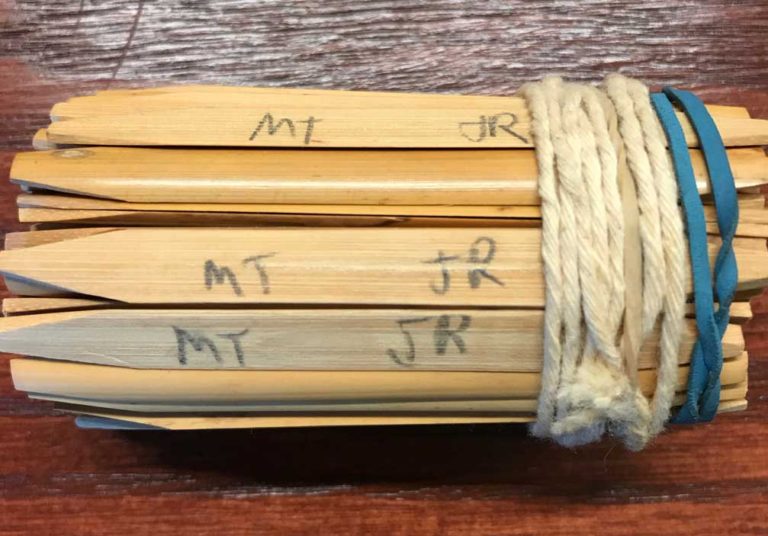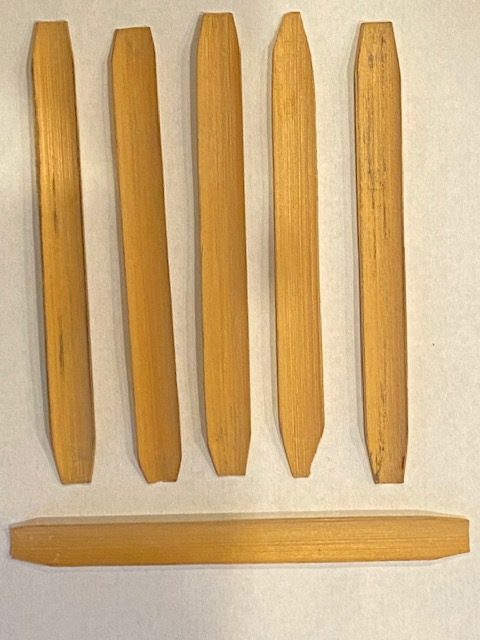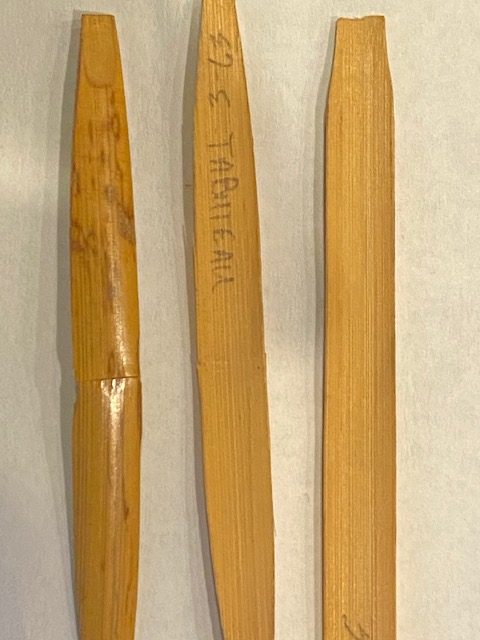Danna Sundet, administrator of the archives and music library of the late John Mack, brought to our attention an interesting piece of ‘Tabuteauviana’:
I came across 94 pieces of cane wound together with the initials MT [Marcel Tabuteau] and JR [Joseph Robinson] in the John Mack Collection. When I asked Joe Robinson about the cane, he said:
“The kilo of tube cane from Maurice Deriaz that rescued my first evening with Marcel Tabuteau in March 1963 [see page 485 in the Storch biography] was shared with John Mack, along with some of the other tubes we collected from the time Tabuteau and I went cane hunting in the Var. The informal deal I had with John Mack was that if I procured cane from some of the growers whose names he gave me, he would prepare it and share it with me. But I was still was not making my own reeds, so I never received any of that cane gouged and shaped from JM. The 94 pieces only pre-gouged with Tabuteau’s and my initials must be from those tubes that were sent to John Mack in 1963!”
After my inquiry, Joe sent the following additional information:
“Danna Sundet inquired last night about the 94 pieces of pre-gouged cane. My first thought was, could that have been the cane I received from Marcel Tabuteau for $25 in the fall of 1965 (for which there is a Customs receipt in a glass case in the Oboe Studio at the Curtis Institute). These pieces of cane [see below] had wondrous capabilities not entirely revealed by my eye-straining measurements soon after I received them.”
“Reeds made from those pieces of cane appeared almost closed after clipping; but they grew full-sized openings as they were scraped, permitting a huge range of tonal possibility from creamy ppp to dramatic fff without ‘spreading.’ I continue to believe that the guide-to-cane diameter ratio forced the cane open during gouging in a way that avoided too-thin sides and caused them afterwards to curl toward the center.”
“[You are right that] Tabuteau disregarded proper pitch in his serenades to the French Alps; but I watched him scrape long-tip reeds and play on them almost immediately. His shaper in 1963 was wide and nearly parallel until its elegant and rather sudden descent to the top of the staple.”




